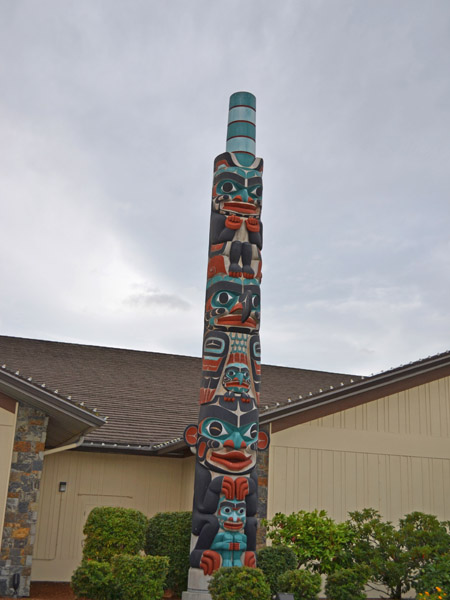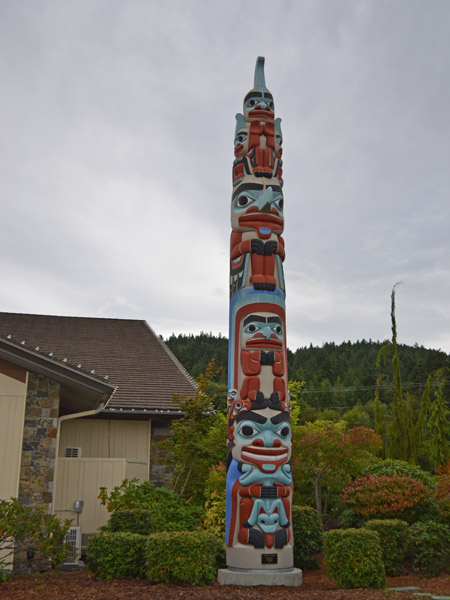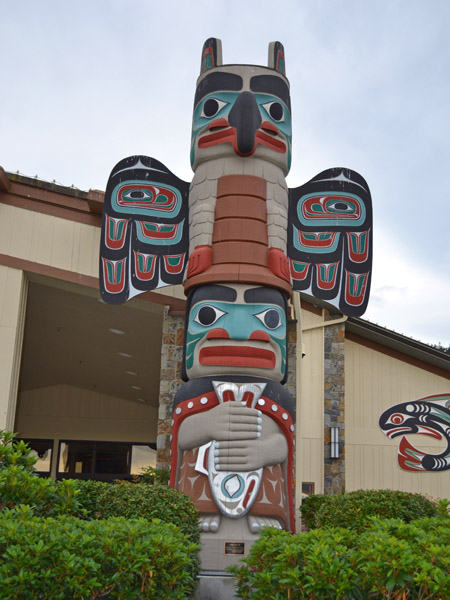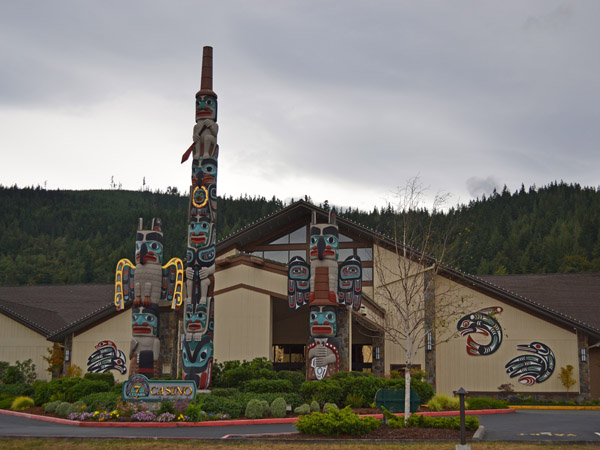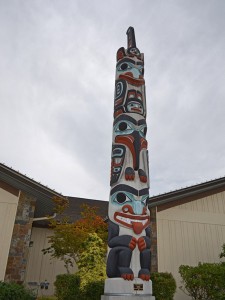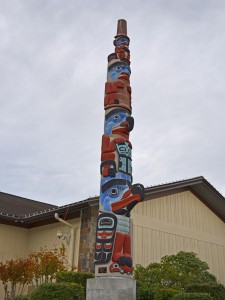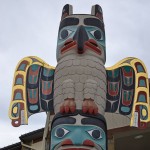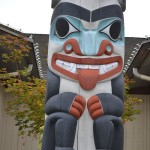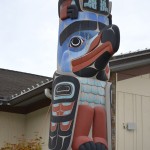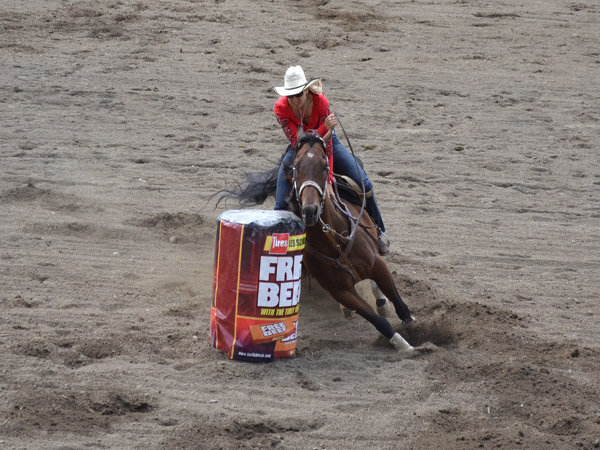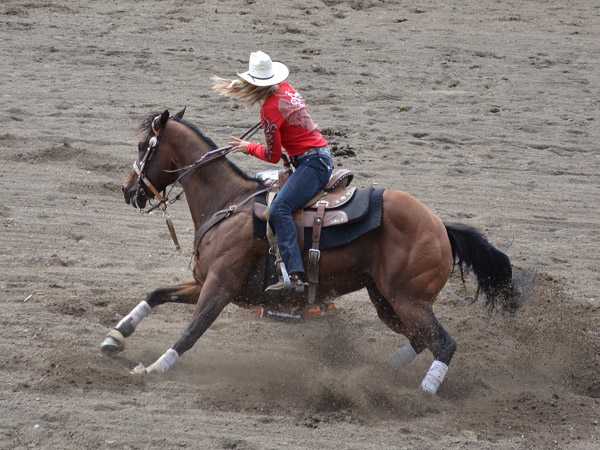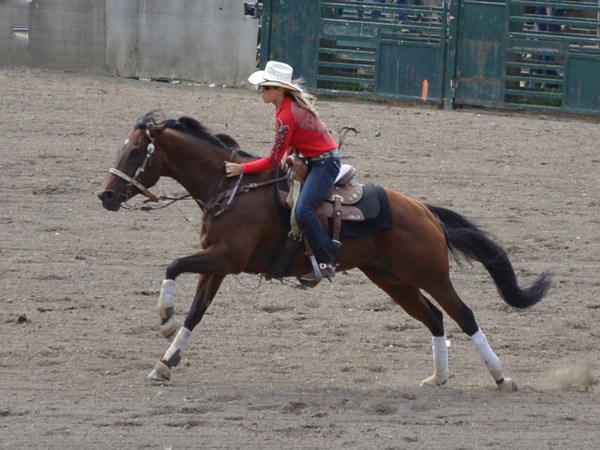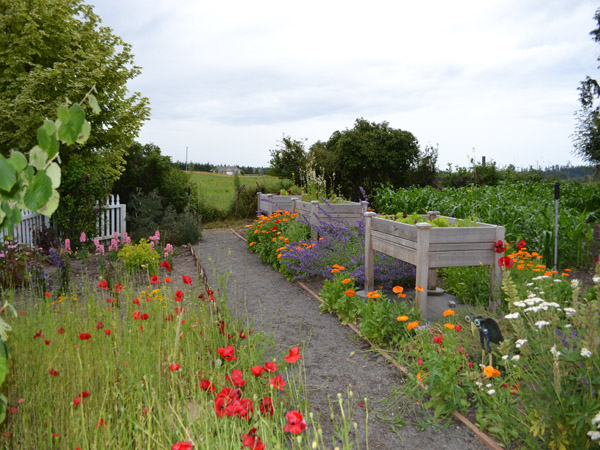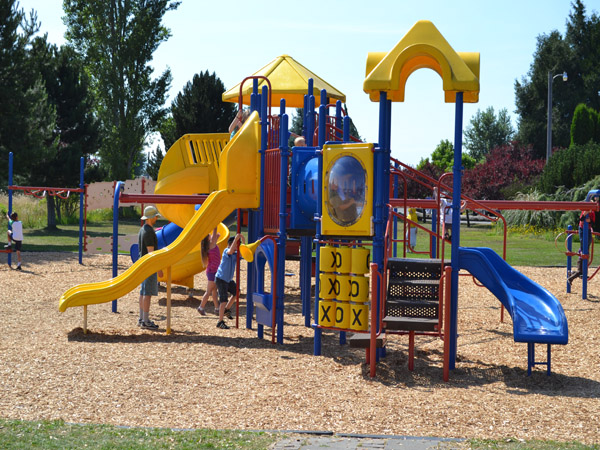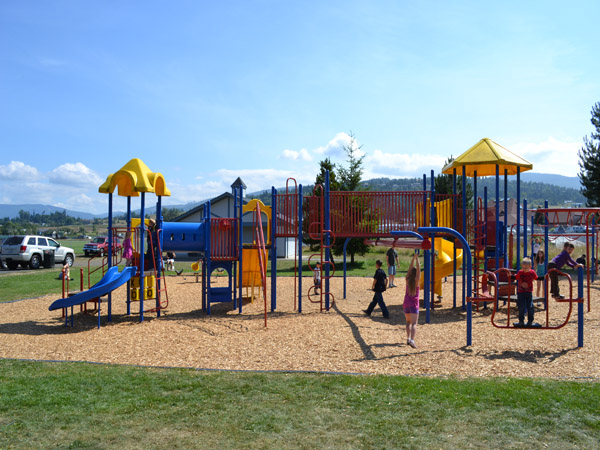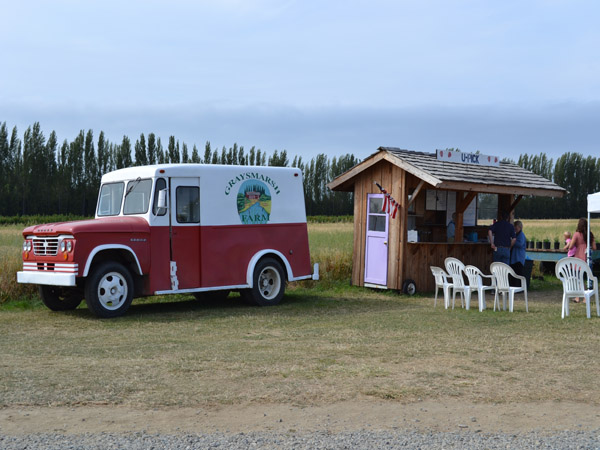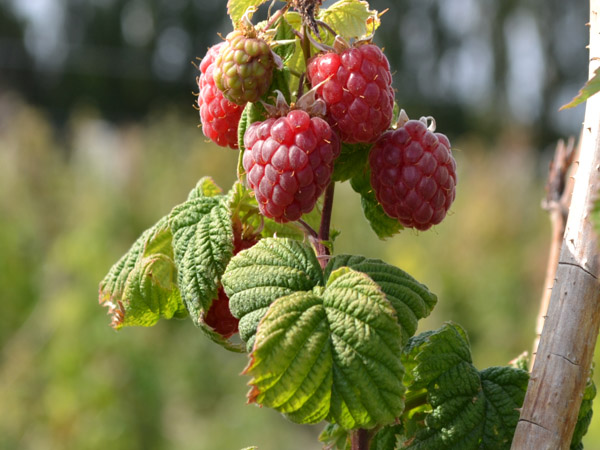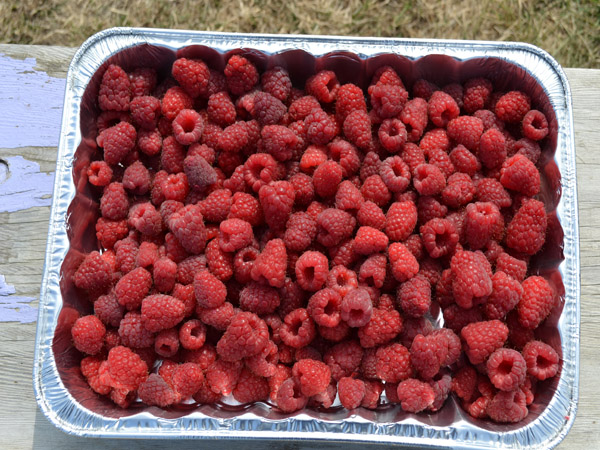Back again at the 7 Cedars Casino, the first totem, above, is in a style from the Kwakwaka’wakw people of Vancouver Island, British Columbia. It is a representation of the supernatural world and shows each major realm of nature: the Forest World, the Sky World, and the Undersea World.
The forms on the totem pole above represent natural phenomena in human-like shapes. They are carved in the Tlingit style of northern British Columbia. The bottom figure on this pole is Fog Woman who can both help and harm coastal peoples. Fog Woman can conceal people from enemies or hide hunters as they approach prey. Her nasty side can disorient people and cause them to get lost, sometimes permanently.
Although totem poles can be viewed in some museum and preserved settings, those created for the S’Klallam Tribe are contemporary. They have been created in the past 20 years by living artists using traditional styles, forms, and legends. The S’Klallam peoples are a current, living culture.
Tomorrow: A look at carvings at the S’Klallam Tribal Center.
